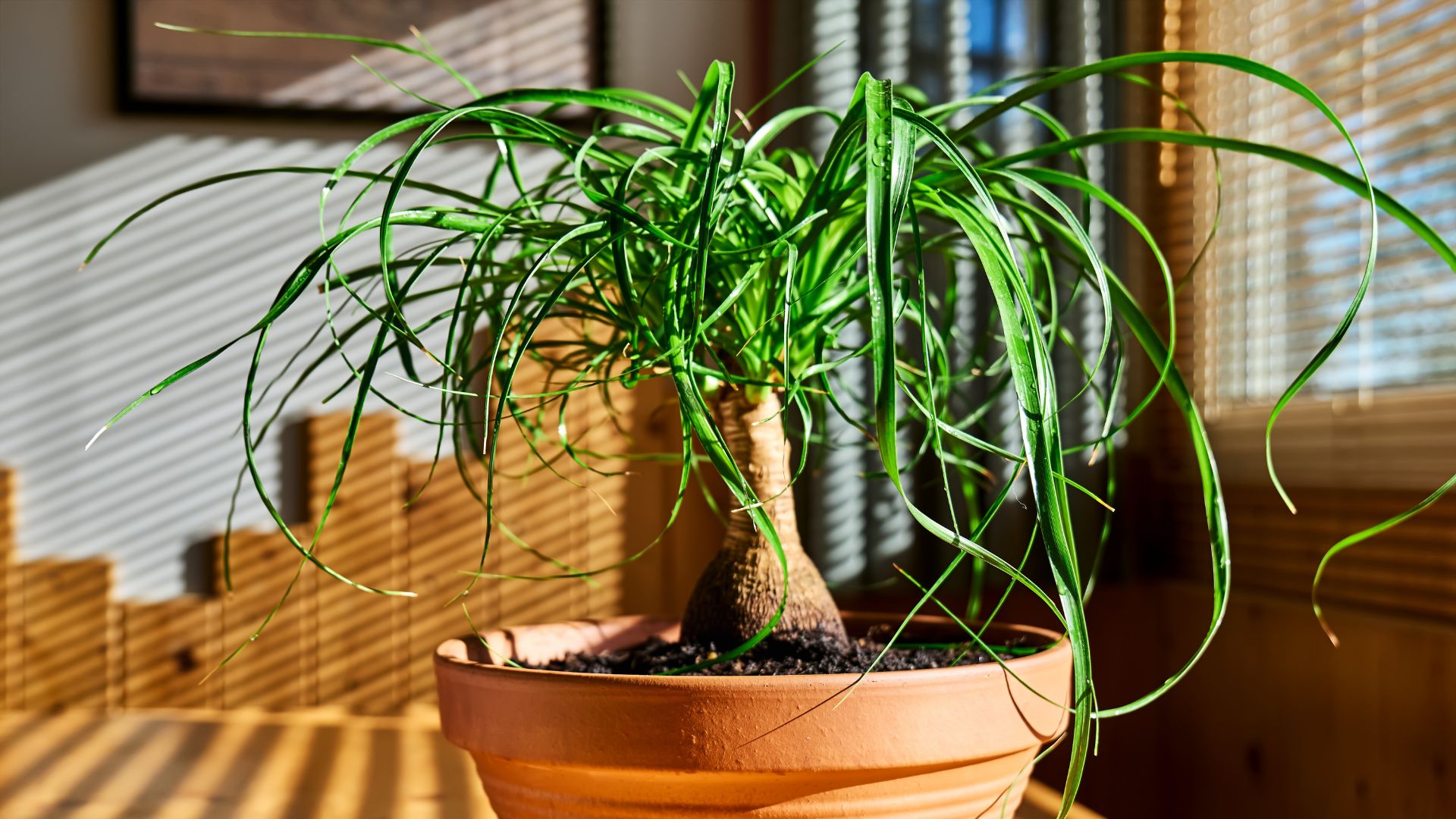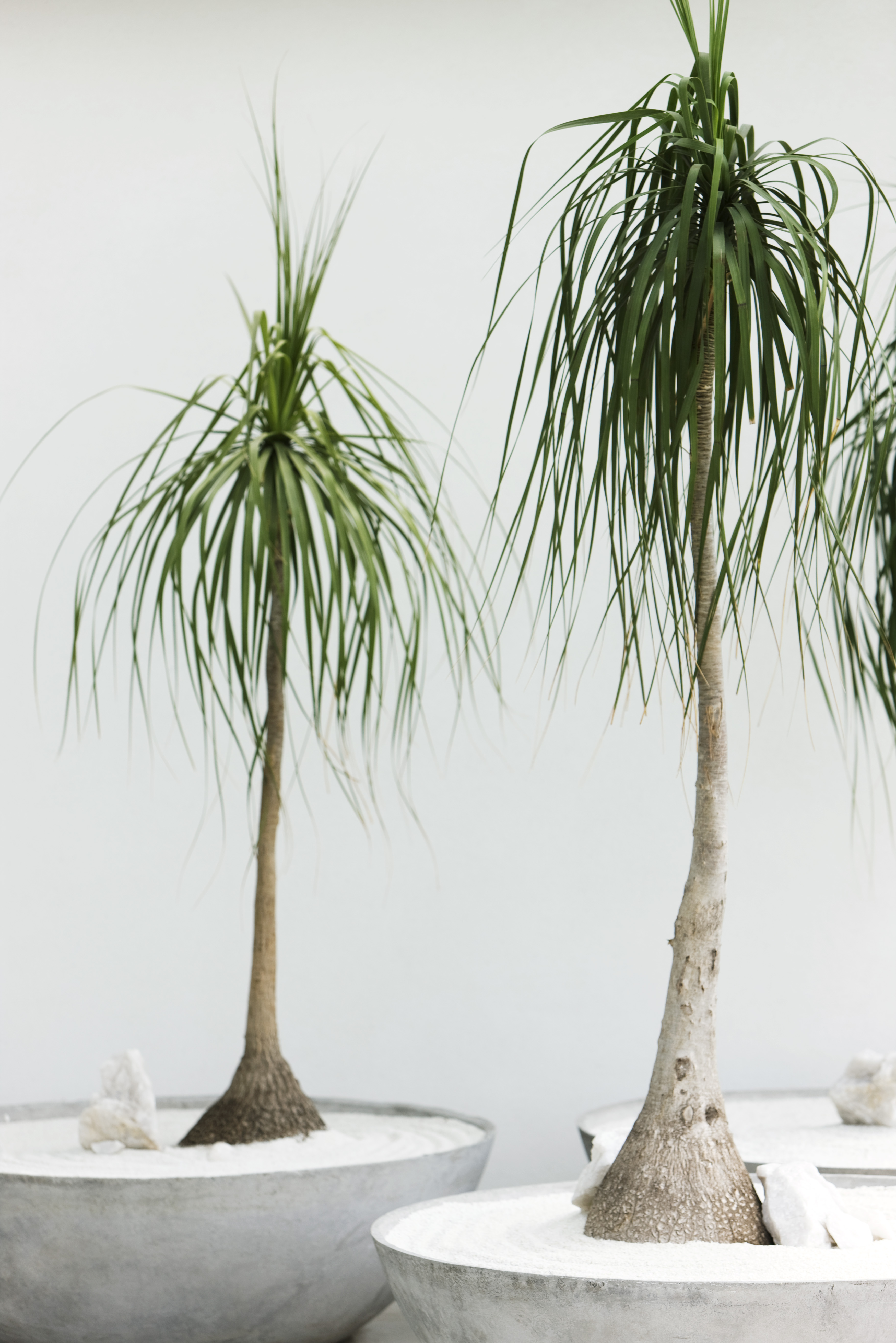
If you're looking for a houseplant that's on the eye-catching, quirky side of the tracks, look no further than the ponytail palm.
Also known as beaucarnea recurvata, the ponytail palm is native to Mexico and features stringy cartoonesque leaves that sure enough resemble a ponytail. It's almost like having a comparatively mini, slim-leaved palm tree growing right inside your home and experts tell us that it's actually quite low lift to care for. In fact, it's one of the easiest indoor palm trees to look after.
We've put together a comprehensive guide on how to grow a ponytail palm indoors and care for it like a pro. So if you're interested in experimenting with a new houseplant, this is your sign to go the ponytail palm route.
How to Grow a Ponytail Palm Indoors

According to Tony O'Neill, plant expert and founder of Simplify Gardening, all you need to successfully begin growing a ponytail palm is four simple steps.
Step 1 — Choose the Right Pot: "Start with a pot that’s slightly larger than the root ball of your ponytail palm," he says. "And ensure it has good drainage holes."
Step 2 — Carefully Select Soil: Next, he recommends using well-draining soil, preferably a cactus or succulent mix. This Rosy Soil Cactus & Succulent Mix from Walmart is a brilliant option.
Step 3 — Plant with Care: "Place the root ball into the pot and fill around it with your chosen soil mix," he guides. "Be sure to press down lightly on the soil surface to eliminate any air pockets."
Step 4 — Initial Watering: "Remember to water thoroughly after planting," he says. "Then allow the soil to dry out completely between subsequent waterings."
Once you complete these four steps, you'll officially be a ponytail palm plant parent. While they may not be one of the most popular houseplants, they're certainly unique and we have a feeling that they'll slowly but surely become a prized plant in your cohort.
How to Care for a Ponytail Palm

Now, the work doesn't end at growing your ponytail palm, for it requires regular care like any other living crop. Luckily, Tony has given us all the information we need to draft a care routine that's perfectly professional.
Temperature: Tony explains that ponytail palms prefer warmer temperatures. "Ideally it's best to maintain temperatures between 60-80°F (15-27°C) when growing ponytail palms," he notes.
Soil: When it comes to planting them in the appropriate soil type, he explains that a well-draining sandy soil is ideal for steady growth.
Humidity: "Low to moderate humidity is suitable for ponytail palms," he finds. "This is purely because they are rewardingly drought tolerant."
Fertilizer: "I recommend feeding with a diluted balanced fertilizer once or twice during the growing season of spring and summer," he explains. We love this Miracle-Gro Tropical Houseplant Food from Amazon.
Sunlight: He tells us they're great houseplants for direct sunlight but can also thrive in indirect sunlight for long hours.
Watering Needs: "I suggest watering your ponytail palm deeply but infrequently," he says. "Allow the top few inches of soil to dry out completely between waterings."
Price: $39
Size: 15"
If you're eager to skip the sapling phase and want to adopt a pre-grown crop, this Costa Farms Ponytail Palm Bonsai from Amazon is the perfect buy.
Price: $27
Size: 8" - 15"
This Nature's Way Farms Ponytail Palm from Walmart is pet-friendly — so you can share the tropical foliage with your furry friends.
Price: $167
Pot: Light Basket
This Live Ponytail Palm Tree from Lively Root is available in grower containers and colorful eco pots but we fell for this charming basket at first glance.
FAQs
Can I Put My Ponytail Palm Outdoors in the Summer?
"Yes, you can place your ponytail palm outdoors in summer, provided temperatures don’t drop below 50°F (10°C)," says Tony. "Simply ensure it’s in a spot that receives morning sun and afternoon shade to prevent scorching."
What's the Best Place to Put a Ponytail Palm?
Tony tells us that a spot that receives ample indirect sunlight, such as near a south, east, or west-facing window with some sun filtering is ideal.
"They’re excellent as focal points in living rooms or offices due to their dramatic appearance," he adds. So if you have a free spot in these busy areas, a ponytail palm will fit right in.
By following this professional guide to ponytail palm care and sticking to a schedule that properly tends to your houseplant's needs, we hope you'll never have to learn how to revive a dying palm plant.
And in addition to the stunning foliage that a new houseplant brings in, it's also a great excuse to extend your collection of planters as well. So if you've penciled growing a ponytail palm into your to-do list, why not treat your new crop to a pretty planter like this Berg Hoffs Terracotta Pot from Terrain while you're at it?
After all, your ponytail palm deserves to look just as chic as the rest of your collection.







